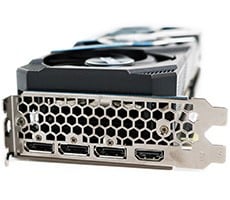NVIDIA GeForce 8800 GTX and 8800 GTS: Unified Powerhouses
One of the most widely used and re-purposed OpenGL game engines on the market; Quake 4 is next...
|
|
|
|
id |

Though OpenGL performance and Quake 4 have always been strong points for NVIDIA-based cards, the Radeon X1950 XTX does put up a solid showing here, actually besting NVIDIA's legacy single GPU card, the GeForce 7900 GTX. However, ATI's fastest is still no match for the new GeForce 8800 series powerhouses and both walk off with decisive victories. In fact the GeForce 8800 GTS is actually able to keep pace with the GeForce 7950 GX2. Finally, witnessing the GeForce 8800 GTX push out over 135 frames per second at 1600X1200 with 4X AA enabled borders on insanity. Clearly if you're going to step up for the power and cost of a GeForce 8800 GTX, you better have a high-resolution LCD panel or CRT to go with it or we may have to hunt you down and ridicule you publicly.







